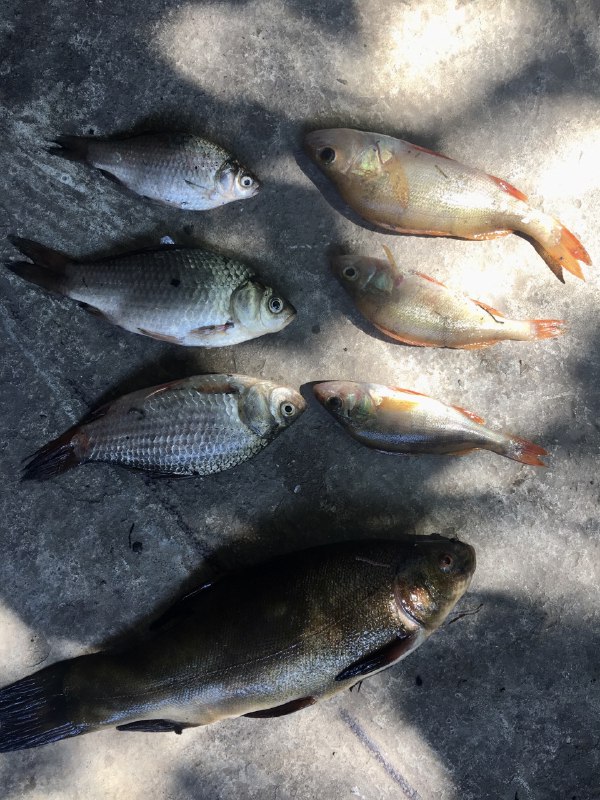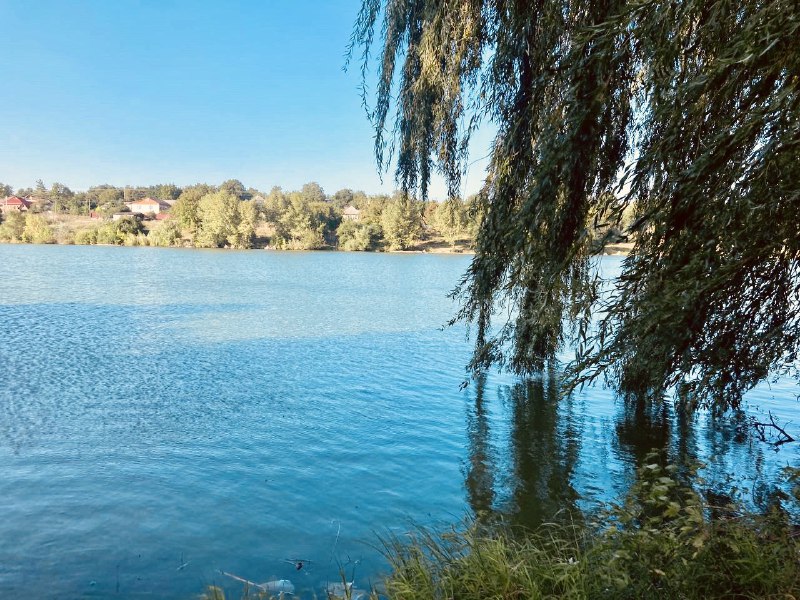Tench, three crucians and perch: back on the fishing trail

Hello! The last week of summer was incredibly hot. I had to deny myself the pleasure of sitting with a fishing rod several times. Even in the morning, there is complete silence on the pond where I have recently "settled". The fish shows no interest in the bait, even with good feeding.
Nevertheless, one day last week I managed to catch a few perches, crucians and one tench. Not the worst catch in such hot weather. And what is most interesting is that the spontaneous bite did not begin in the morning, but somewhere around 9 am. And an hour later it ended just as quickly. I used an ordinary worm for bait.

I don't really like to catch perch. As a rule, in ordinary ponds, I come across small specimens, like the one in the photo. I'm also tired of crucian carp, because I've caught a lot of them in my life. Large crucians are rare. Unfortunately, ponds that are not leased are constantly being raided by poachers.
While perch and crucian carp do not arouse much interest in me, tench is a very interesting and tasty fish. As practice has shown, it is quite difficult to catch it. This year I caught tench for the first time in my life. I read about it on the Internet, talked to fishermen, and I already had a certain impression of catching this handsome fish.
Tench, also known as "gypsy fish," takes a long time to grow. This baby in the photo weighs about 200 grams. It takes about 5 years to grow to this size in the wild. It is not surprising that huge specimens are rare in my region. They are caught with nets and knocked out with electric fishing rods. Throughout the summer, I have seen tench caught weighing no more than 700-800 grams.
The tench does not like sunlight. It looks for places in the shade, pits, and thickets of grass. Usually, it is a lonely, lazy fish that moves along proven paths. An angler will be lucky if he comes across such a path. It likes worms. In general, it gets its food from the silt. Therefore, the depth should be set so that the hook with the bait is near the bottom. It is advisable to feed the fish well, but in moderation. I usually use cake, sometimes cake with porridge, and sometimes I use a ready-made mixture from the store. In general, the result is almost the same. The bite is better in the morning, but not during sunrise - an hour or two later. These are the conclusions I have drawn for myself based on my own experience, the words of fishermen and information from the Internet.
Good luck to everyone!
Лин, трійка карасів та окунів: знову на рибалці
Привіт! Останній тиждень літа видався неймовірно спекотним. Довелося кілька разів відмовити собі в задоволені посидіти з вудкою. Навіть зранку на ставку, де я останнім часом “оселився”, повна тиша. Риба не проявляє ніякої цікавості до наживки навіть при доброму підгодовуванні.
Та все-таки в один з днів минулого тижня мені вдалося спіймати кілька окунів, карасів та одного лина. Не найгірший улов в таку жарку погоду. І що саме цікаве: спонтанний кльов розпочався не зранку, а десь близько 9 години ранку. І вже через годину він так же швидко й закінчився. Для наживки використовував звичайного черв'яка.
Я не дуже люблю ловити окуня. Як правило, на звичайних ставках попадаються невеличкі екземпляри, як на світлині. Також набридли карасі, адже за своє життя я переловив їх дуже багато. Великі карасі попадаються рідко. На жаль, ставки, що не перебувають в оренді, постійно потерпають від набігів браконьєрів.
Якщо окунь та карась не викликає в мене особливого інтересу, то лин дуже цікава й смачна риба. Спіймати його, як продемонструвала практика, досить складно. В цьому році я вперше в житті спіймав лина. Почитав про нього в мережі, поспілкувався з рибалками та й у самого вже склалося певне враження щодо ловлі цього красеня.
Лин, він же “циганська риба” росте дуже довго. Ось цей малюк, що на світлині, важить близько 200 грамів. Щоб дорости до таких розмірів в природних умовах йому потрібно близько 5 років. Зовсім не дивно, що величезні екземпляри в моєму регіоні рідкість. Їх виловлюють сітками та вибивають електричними вудками. За все літо мені доводилося бачити спійманих линів вагою не більше 700-800 г.
Лин дуже не любить сонячного проміння. Шукає місця в затінку, ямах, зарослях трави. Зазвичай — це одинока, лінива риба, що рухається перевіреними шляхами. Рибалці добре пощастить, якщо він натрапить на такий шлях. Полюбляє він черв'яка. Взагалі, їжу добуває з мулу. Тому й глибину потрібно виставляти так, щоб гачок з наживкою знаходився біля самого дна. Бажано добре, але в міру підгодувати рибу. Я використовую зазвичай макуху, іноді макуху з кашею, а буває використовую готову суміш з магазину. В цілому, результат майже однаковий. Клює краще зранку, але не під час сходу сонця — на годину чи дві пізніше. Ось такі висновки зробив для себе на основі власного досвіду, слів рибалок та інформації з мережі.
Всім добра!
Text and photo content are the property of the author, unless otherwise noted. Publications and photos are not published on other social media.










Comments